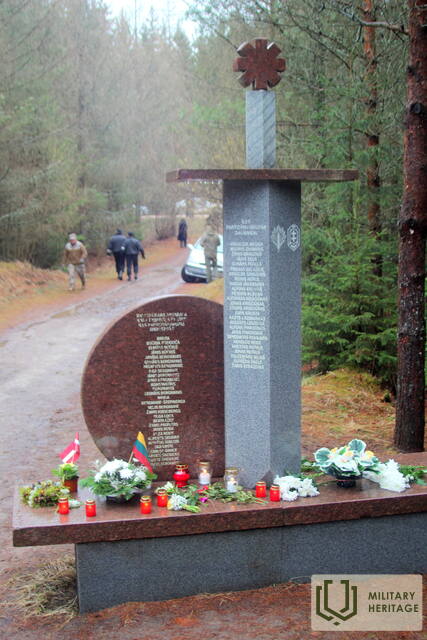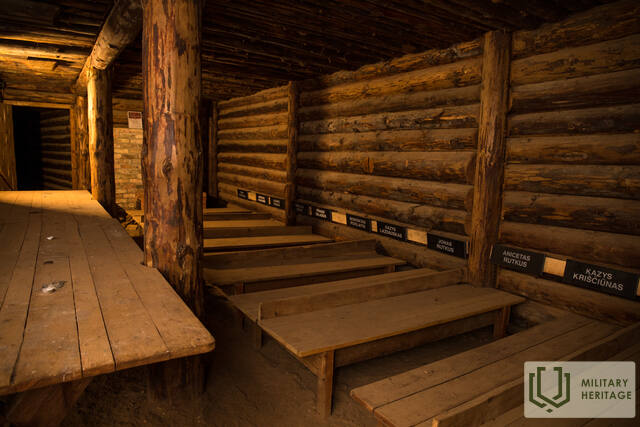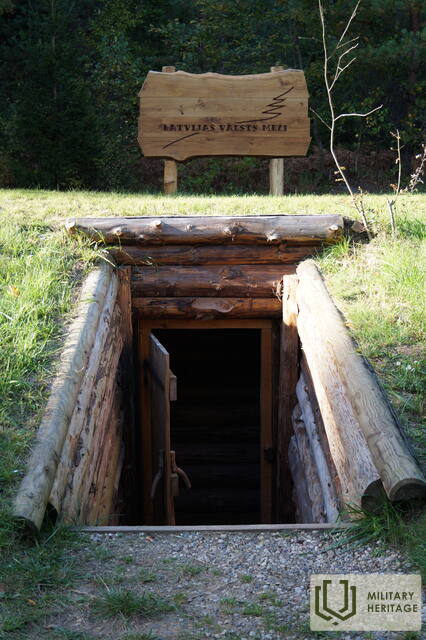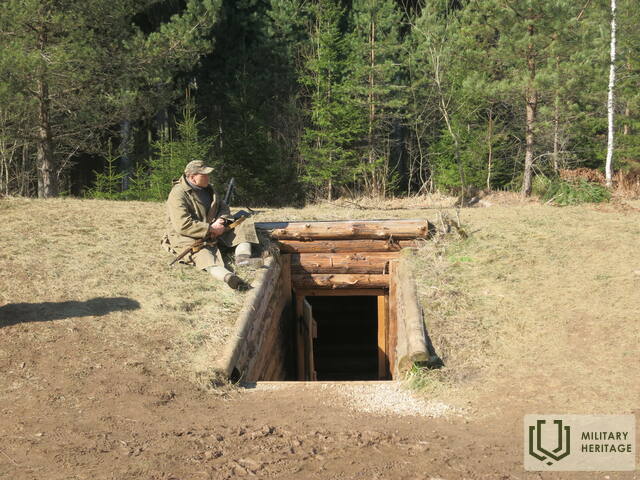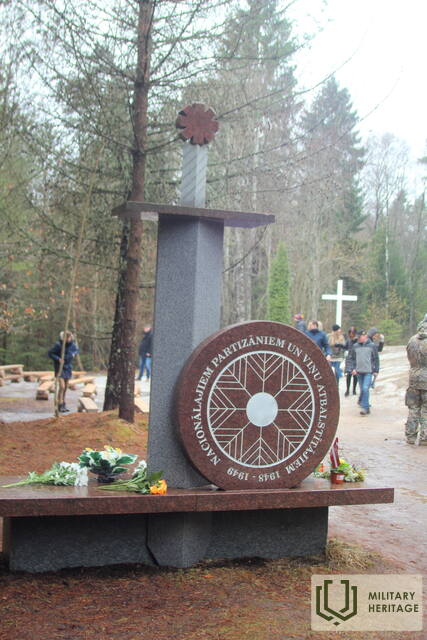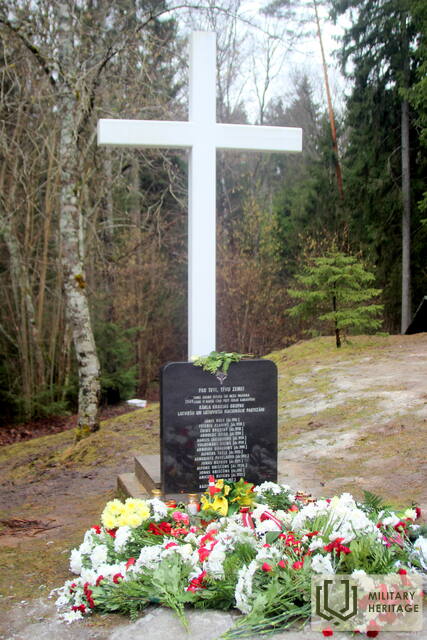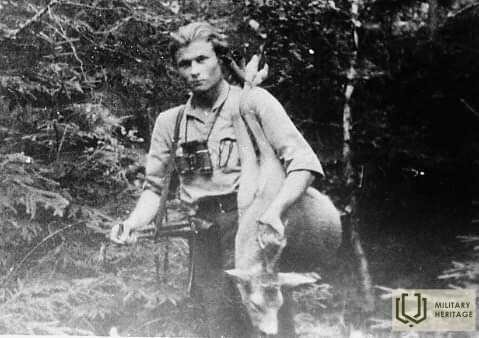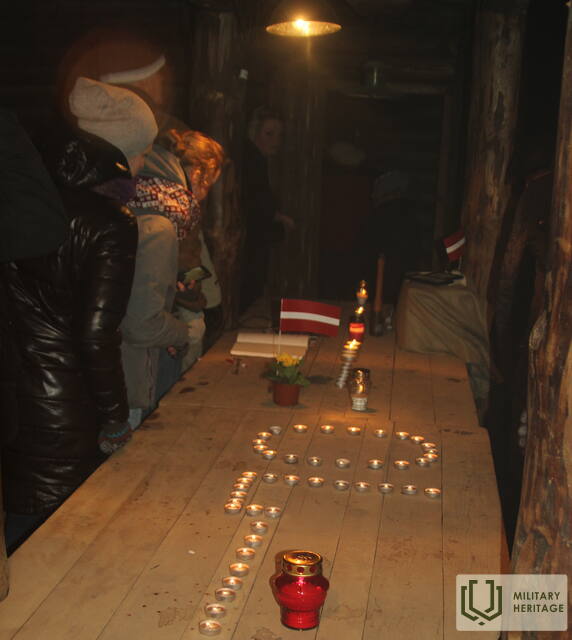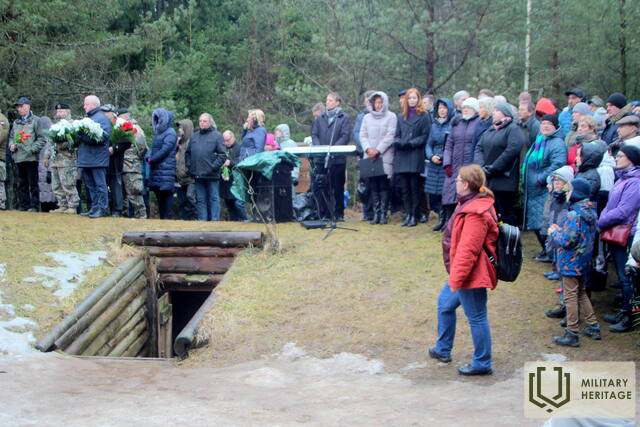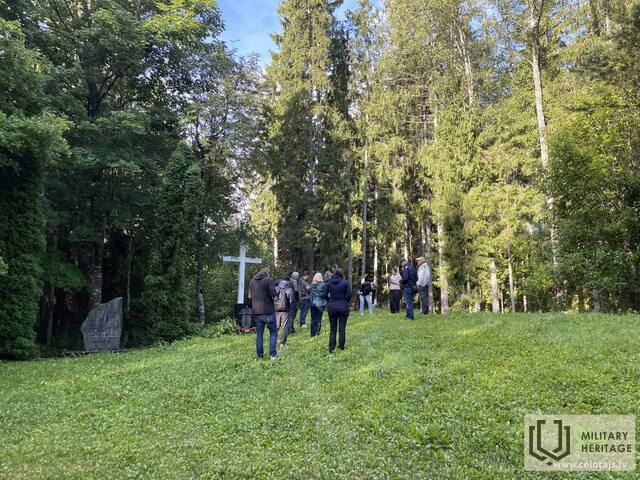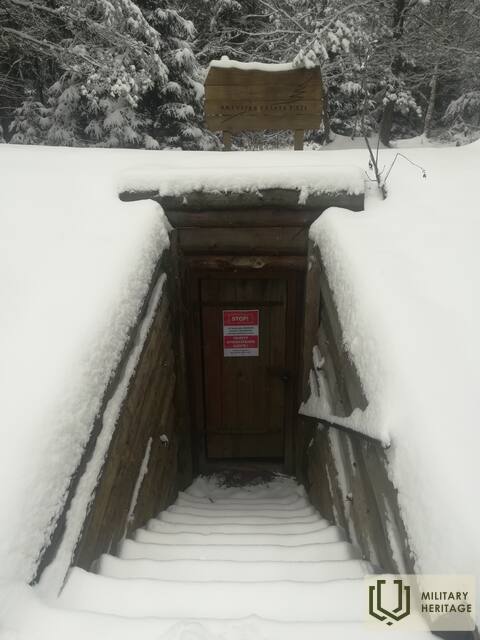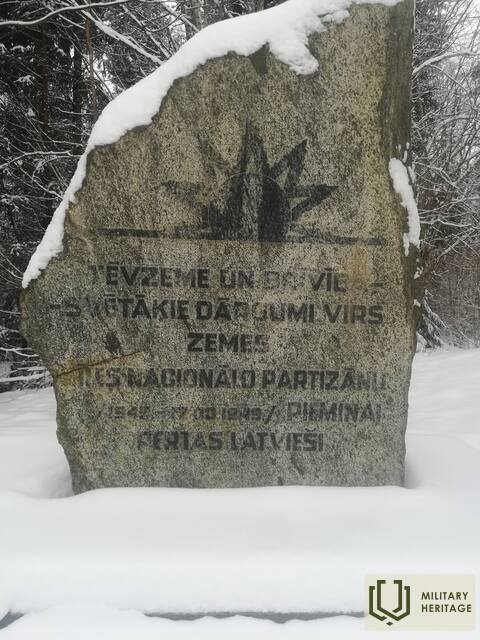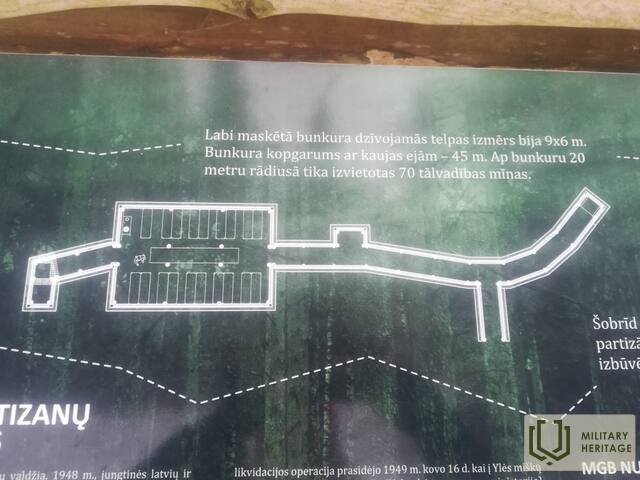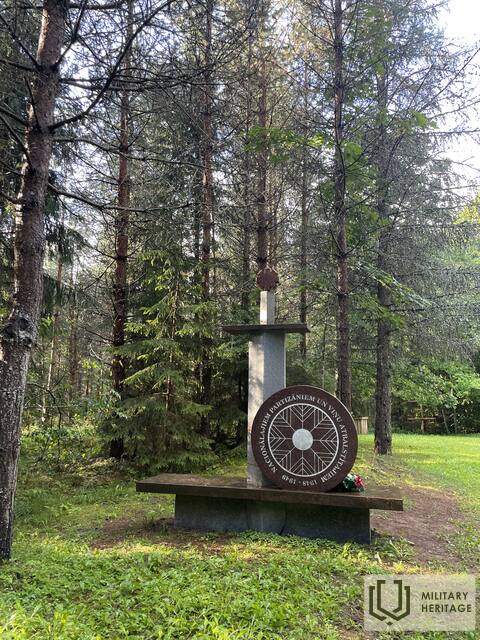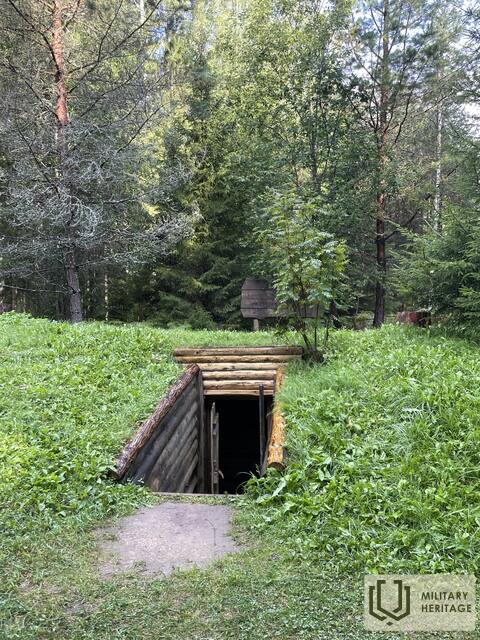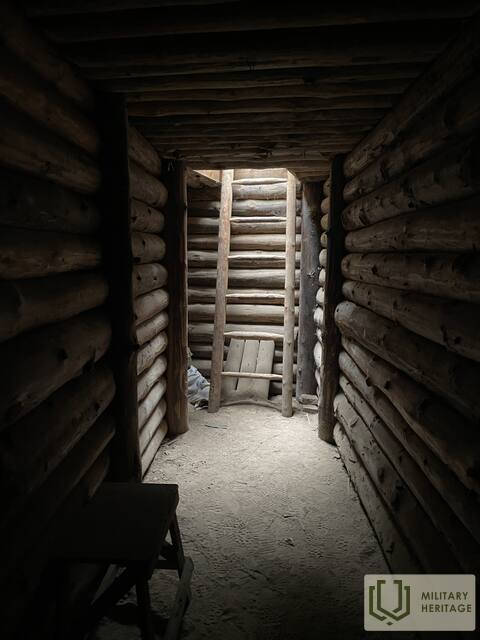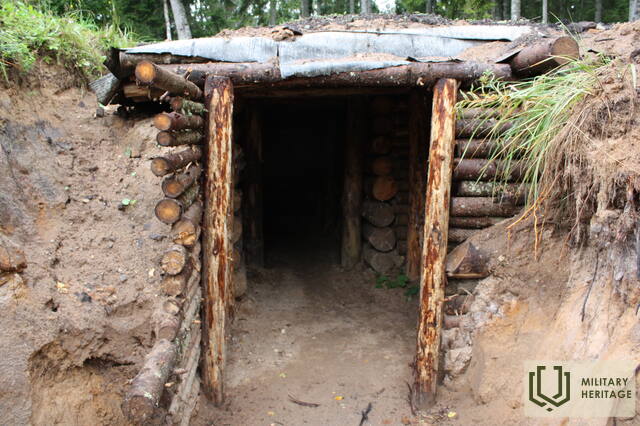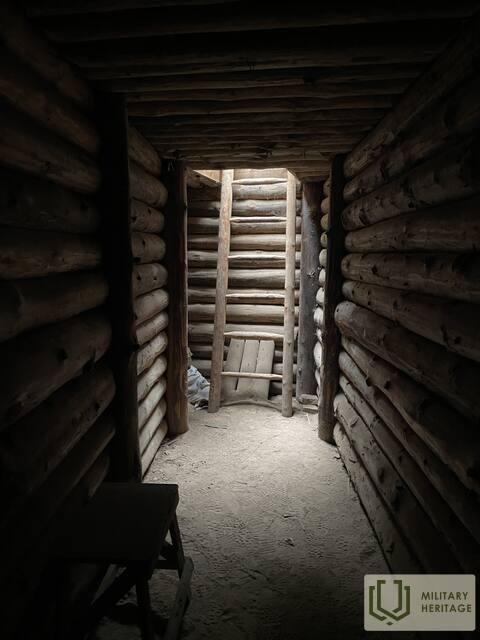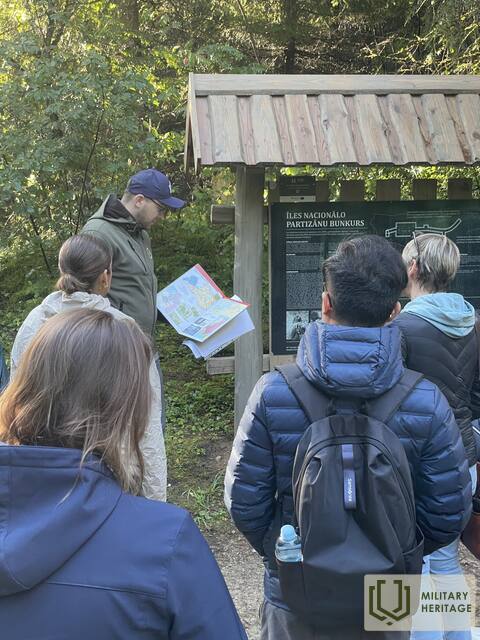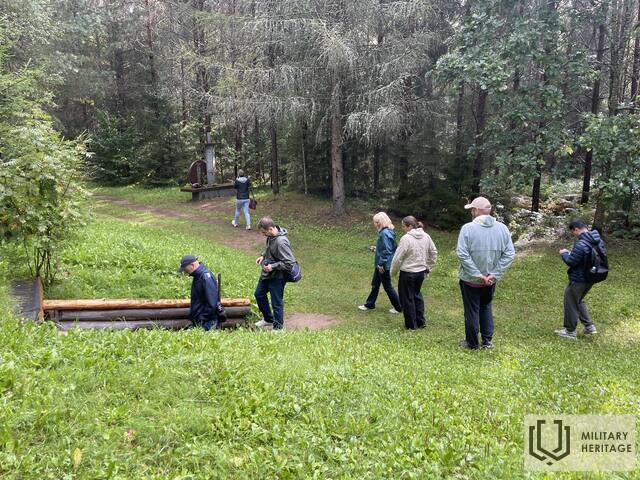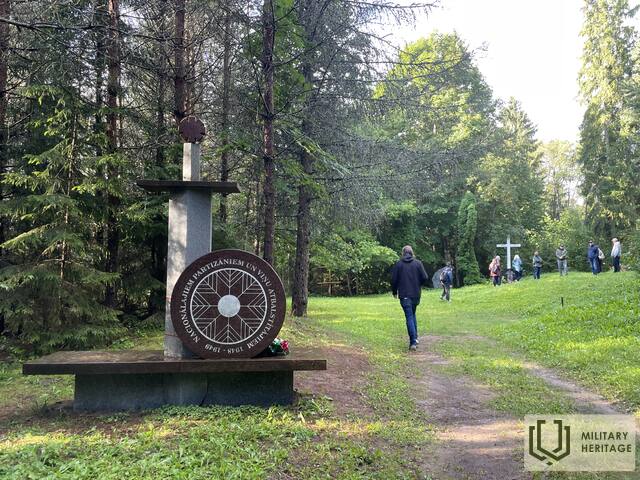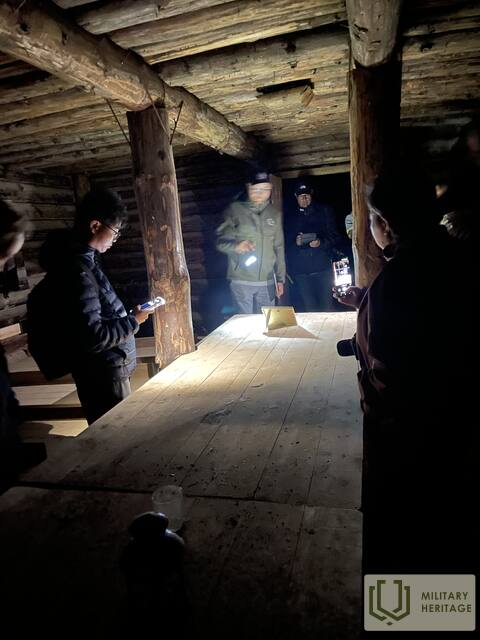Īle National Partisan Bunker Bunker

The bunker is located in the Īle forestry of Zebrene Rural Territory, at the turn-off from the P104 Biksti-Auce Road.
The Kārlis Krauja Group of Īle National Partisans was formed in 1947. V. Z. Brizga (alias K. Krauja) was appointed the commander of the group. In October 1948, the Krauja Group merged with a group of Lithuanian national partisans. Krauja Group operated in Jelgava District and consisted of 27 national partisans.
In October 1948, Krauja Group built an underground bunker in Lielauce Parish, Jelgava County, not far from the Īle Forestry, 300 metres to the north of the “Priedaišu” house. Its total length, including battle passages, was 45 metres. 70 remote-controlled mines were planted around the bunker. The bunker was equipped with a furnace, a well, a toilet, and a storage room.
On 17 March 1949, the 24 partisans who were in the bunker at the time fought their last battle against the 760-strong troops of the Ministry of National Security or Cheka. After the battle, 9 members of the group were arrested, while 15 fell in the battle, with eight of them being Latvian and seven being Lithuanian. In 1992, the Home Guards, together with the Daugavas Vanagi (Hawks of the Daugava), unearthed the bunker that had been blown up. A White Cross, a memorial stone and a granite statue were erected at the site.
Inside the bunker, you can see a stove, a table, and narrow benches on which the partisans slept. Information boards and memorial stones with the names of the partisans have been installed at the bunker.
Used sources and references:
R. Ābelnieks, A. Urtāns. The National Resistance Movement and the Counteraction of the Repressive Institutions of the Soviet Occupation in the Bauska District/District (1944 – Mid-1950s) // Papers of the Latvian Historians' Commission. Vol. 19: Occupied Latvia 1940-1990. Riga: Latvian History Institute Publishing House, 2007, pp. 370-391.
The Unknown War. The Struggle of Latvian National Partisans Against the Soviet Occupiers 1944-1956. 2nd ed. Riga: Domas spaks, p. 303.
https://www.lsm.lv/raksts/dzive--stils/cilvekstasti/iles-bunkurs--vestures-liecinieks.a80725/
Related timeline
Related topics
Related stories
Visvalžas Brizga (Kārļa krauja) National Partisan Group
The Īle "Kārļa Krauja" Latvian and Lithuanian joint national partisan group was one of the largest resistance groups in the territory of Latvia in the period from 1947 to 1949.




